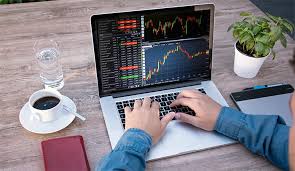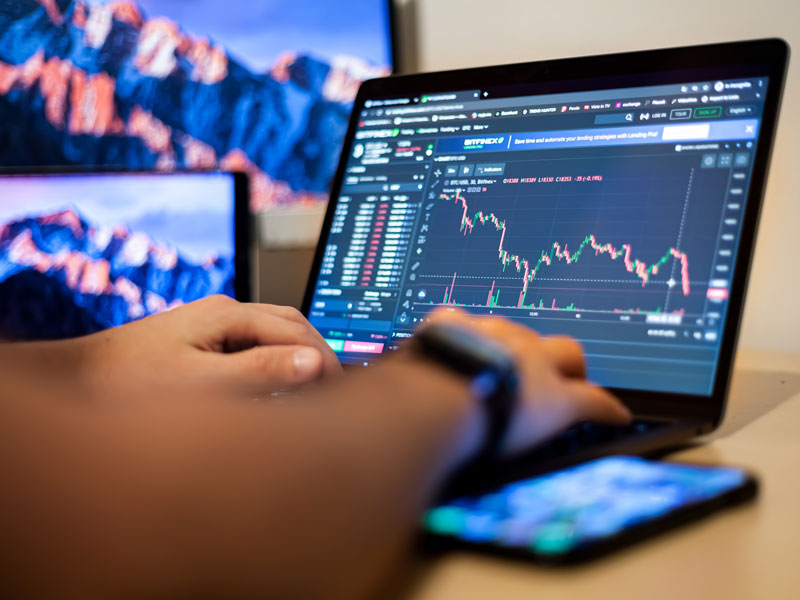
The Ultimate Guide to Forex Exchange Trading 1695939891

Forex exchange trading offers a vast landscape for individuals looking to capitalize on currency fluctuations. This market operates 24 hours a day, five days a week, providing unprecedented opportunities for traders around the globe. As the largest financial market in the world, with a daily turnover exceeding $6 trillion, Forex trading has drawn interest from both institutional and retail traders alike. Among the resources available, forex exchange trading trading-terminal.com stands out for its robust analysis and tools for traders.
Understanding Forex Exchange Trading
The Foreign Exchange Market, commonly known as Forex or FX, is where currencies are traded. It is the largest and most liquid market in the world. The Forex market is decentralized, meaning there is no centralized exchange where all transactions occur. Instead, trading occurs over-the-counter (OTC) through a vast network of banks, brokers, and retail traders, making it accessible to anyone with an internet connection.
The Mechanics of Forex Trading
Forex trading involves pairs of currencies. When you trade one currency for another, you are speculating on the value of that currency pair. For example, if you think the euro will appreciate against the dollar, you might buy the EUR/USD pair. Your profit or loss will depend on the exchange rate at which you bought the currency pair in contrast to the rate at which you sell it.
Key Concepts in Forex Trading
Currency Pairs
Currencies are quoted in pairs. The first currency in the pair is known as the ‘base currency,’ and the second is the ‘quote currency.’ Understanding currency pairs is essential for any trader as it dictates how much of the quote currency is needed to buy one unit of the base currency.
Bid and Ask Prices
The ‘bid’ price represents the amount that traders are willing to pay for a currency pair, while the ‘ask’ price represents the amount sellers are willing to accept. The difference between these prices is known as the spread, which represents the cost of trading.
Leverage and Margin
Forex traders often use leverage to amplify their trading position. Leverage allows traders to control a larger position than their actual investment would allow. While this can lead to substantial profits, it also increases the risk of significant losses. Understanding margin requirements is essential to manage risk effectively.

Types of Forex Trading Strategies
There are several trading strategies that traders employ in the Forex market, and choosing the right one can significantly impact success. Here are a few popular methods:
Scalping
Scalping is a trading strategy that involves making numerous trades over short periods to capitalize on minor price movements. Scalpers aim for small profits gathered throughout the trading session, requiring swift execution and a strong understanding of market dynamics.
Day Trading
Day trading involves entering and exiting trades within the same day. By focusing on short-term price movements, day traders avoid the risk of overnight market changes. It requires diligent analysis and quick decision-making.
Swing Trading
Swing trading is a longer-term strategy where traders aim to capture price movements over several days or weeks. This approach allows traders to take advantage of price “swings” in the market by identifying trends and patterns.
Position Trading
Position trading is a long-term strategy that looks at the overall market trend. Traders using this strategy hold positions for months or even years, often relying on fundamental analysis to guide their decisions.
Tools and Resources for Successful Trading
The right tools and resources can enhance a trader’s experience and performance in the Forex market. Here are some essential tools every trader should consider:
Charting Software

Charting software helps traders analyze price movements and identify trends. Advanced platforms offer a range of indicators and tools to assist in technical analysis.
Forex News Resources
Staying updated with the latest news and economic indicators is vital in Forex trading. Many platforms provide real-time news feeds and economic calendars to help traders stay informed.
Trading Journals
Keeping a trading journal helps traders reflect on their strategies, decision-making processes, and outcomes. Documenting trades allows for ongoing learning and improvement.
Risk Management in Forex Trading
Risk management is crucial in Forex trading, and traders must implement strategies to mitigate potential losses. A few key strategies include:
Setting Stop-Loss Orders
Stop-loss orders automatically close a position when it reaches a certain price point, limiting potential losses. This tool is essential for maintaining discipline in trading.
Diversifying Trading Portfolio
Diversifying trades across different currency pairs can reduce overall risk. Traders should avoid putting all their capital into a single position, as this can lead to substantial losses.
The Emotional Aspect of Trading
Forex trading is not just about numbers; it’s also about psychology. Traders must manage their emotions effectively, as fear and greed can significantly impact decision-making. Developing a strong mental framework is just as important as having a solid trading strategy.
Conclusion
Forex trading presents vast opportunities for individuals willing to put in the effort and discipline required to succeed. Understanding the market’s mechanics, implementing sound strategies, and utilizing effective tools can lead to profitable trading experiences. As you embark on your Forex trading journey, remember to prioritize education and risk management as you lay the foundation for your trading career. Whether you are a beginner or an experienced trader, continuous learning and adaptation are key to thriving in the dynamic world of Forex exchange trading.
